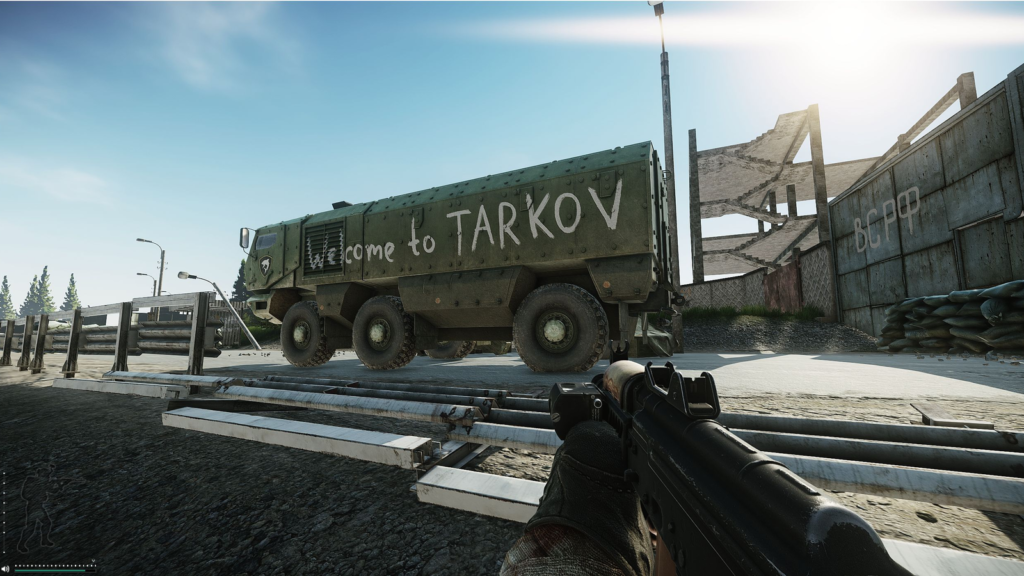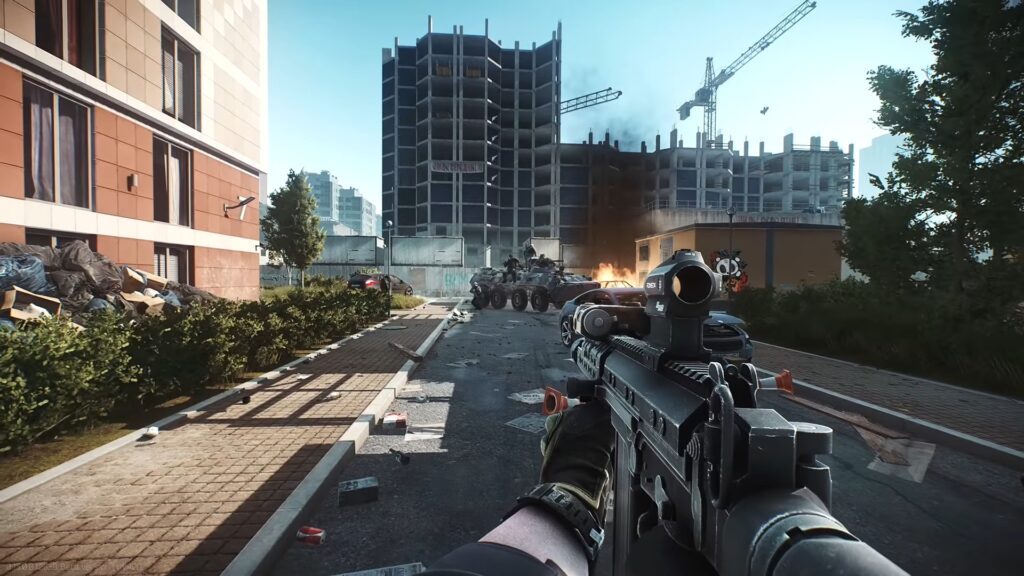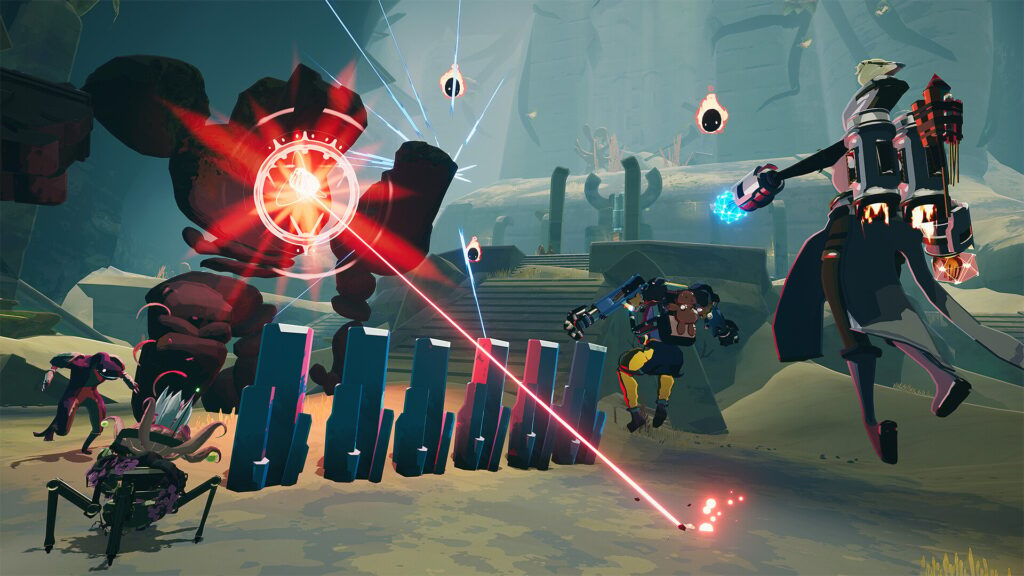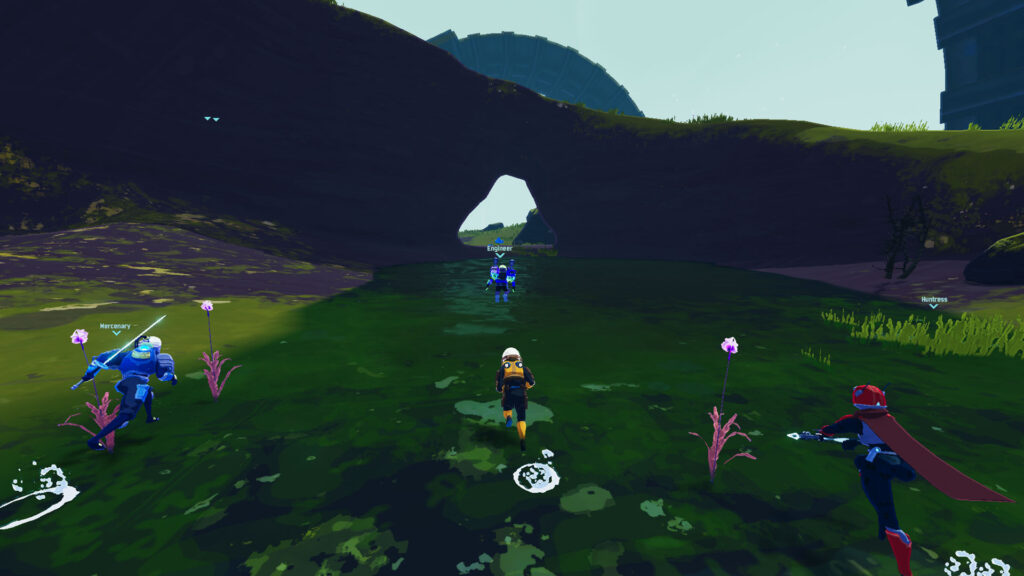Introduction to the Thrill of Risk in Gaming
In the realm of gaming, the concept of risk plays a crucial role in fostering excitement and maintaining player engagement. Risk can be defined as the potential for loss or failure that a player faces when making strategic decisions in a game. This dynamic creates a lasting tension that is often essential for a compelling gameplay experience. By weighing the potential rewards against the uncertainties of failure, gamers find themselves caught in a cycle of anticipation and thrill that keeps them invested in the experience.
Many games effectively capitalize on this balance between risk and reward to enhance the overall player experience. This dynamic is particularly evident in survival and adventure games, where players must make critical decisions that can alter the course of their gameplay. The stakes are often high; losing a character, valuable resources, or significant progress in a game can lead to feelings of frustration but also serve as a driving force for future attempts. It is this push and pull between the excitement of potential success and the dread of possible failure that heightens the overall gaming atmosphere.
In popular titles such as Escape from Tarkov and Risk of Rain 2, the integration of risk is especially pronounced. These games not only demand careful calculation and strategy from players, but also allow for a deeply immersive experience where every decision can be a matter of life or death. The thrill is further amplified by elements such as permadeath in Escape from Tarkov and unpredictable challenges in Risk of Rain 2, adding layers of complexity and depth to gameplay. As we delve deeper into these games, it becomes clear that the thrill generated from risk is a fundamental aspect of their design and appeal.
The Role of Risk in Escape from Tarkov
Escape from Tarkov presents a unique blend of high-stakes gameplay that fundamentally incorporates risk as a core mechanic. Set in an open world, this multiplayer first-person shooter challenges players to engage in missions while navigating a perilous environment fraught with danger. The risk involved in exploration is executed through various elements, such as the constant threat of enemy players and the potential for encountering aggressive artificial intelligence (AI) opponents.
As players traverse Tarkov’s map, they must carefully evaluate the potential rewards against the risks associated with their

decisions. The loot system incentivizes players to embark on dangerous missions to acquire valuable equipment. However, each expedition carries the looming possibility of loss; if players are killed during their journey, they risk losing not only their acquired gear but also the resources they brought into the raid. This creates a juxtaposition of reward versus risk, as players must determine if the potential gains are worth the peril involved.
The necessity for strategic planning and quick decision-making becomes evident as players navigate this high-risk landscape. Decisions made during a raid can have significant implications, influencing whether they emerge victorious or face defeat. Players frequently assess their loadout, planning routes, and selecting engagement strategies based on the evolving circumstances. This requires not only skill but also a deep understanding of their own capabilities and those of their opponents.
Moreover, Escape from Tarkov’s mechanics encourage continuous adaptation to an environment where uncertainties abound. In conclusion, the intertwining of risk and reward illustrates the game’s complexity, driving players to hone their decision-making skills and strategic thinking as they seek to escape Tarkov successfully.
Strategic Calculation in Escape from Tarkov
Escape from Tarkov is a uniquely intense gaming experience that merges survival mechanics with tactical decision-making. Players are constantly faced with a variety of calculations that can significantly impact their gameplay. These calculations revolve around loot collection, gear management, and player interactions, emphasizing the strategic nature of the game.
First and foremost, loot collection requires players to carefully evaluate their surroundings and potential rewards. As players navigate the hazardous environments of Tarkov, the decision to engage in combat or to avoid conflicts is pivotal. The risk vs. reward analysis becomes an essential calculation as players assess whether their current gear is sufficient to take on enemies while ensuring that their loot is worth the risk. Each encounter can lead to gaining valuable equipment or losing everything, driving the adrenaline high that fans seek.

Gear management is another crucial element of these strategic calculations. Players must be selective about which items to carry into raids, often weighing the beneficial impact of various gear against their weight and usability. This includes making choices about the types of weapons, ammunition, and armor that best suit their intended playstyle. Efficient gear management can mean the difference between survival and defeat, highlighting the importance of strategic foresight and planning.
Additionally, player interactions introduce an unpredictable element, as every other player is a potential adversary or ally. Calculating the likelihood of encounters and responding accordingly alters the gameplay dynamics significantly. Trust may be fleeting in Tarkov, and players often need to strategize on-the-fly, estimating the intentions of their opponents, which adds to the thrill of each engagement.
Overall, the intricate calculations involved in loot collection, gear management, and player interactions contribute substantially to the depth and excitement of Escape from Tarkov, reinforcing its position as a game that thrives on strategic thinking and risk assessment.
Exploring Risk in Risk of Rain 2
Risk of Rain 2 is a dynamic action-platformer that embraces the concept of risk through its various gameplay mechanics. The game challenges players to navigate randomly generated environments while facing an array of enemies, all while managing their resources and gear. This inherent unpredictability amplifies the stakes, creating a thrilling experience that keeps players engaged and constantly adapting their strategies.
The core mechanic of Risk of Rain 2 hinges on the concept of time, where the longer players take to complete a level, the more challenging foes they encounter. This ticking clock prompts a calculated risk: do players rush to finish or take the time to gather more upgrades? As they make these decisions, players must weigh the potential gains against the imminent threats that grow increasingly formidable with each passing moment.
Furthermore, the game incorporates a variety of items that confer distinct abilities and enhancements, further introducing variability. The randomness of item drops means that each run presents different scenarios, requiring players to adapt their strategies based on what they find. This aspect of chance in Risk of Rain 2 necessitates a flexible approach, as players might discover powerful items that significantly alter their combat style or enhance their survivability, thus adding another layer of risk to the gameplay.
Moreover, the cooperative multiplayer aspect of Risk of Rain 2 introduces additional elements of risk management as players must coordinate their actions. Effective communication becomes crucial, especially when facing increasingly difficult bosses that demand precise strategies and teamwork. The combination of individual risk-taking and collaborative tactics heightens the excitement, ultimately contributing to a uniquely exhilarating adventure that defines Risk of Rain 2.
The Calculation of Rewards in Risk of Rain 2
In the engaging universe of Risk of Rain 2, the calculation of rewards is a crucial aspect that significantly influences players’ experiences. The game’s loot system operates on principles of randomness, where players encounter varying drop rates for items and equipment as they progress through levels. This randomness introduces a layer of uncertainty that directly impacts decision-making processes, as players must weigh the risks associated with each gameplay decision against potential rewards.
As players ascend through the various stages of the game, they are frequently confronted with choices regarding when to engage in combat or when to pursue the collection of items. The potential rewards, which include powerful gear and upgrades, are enticing; however, the chance of encountering overwhelming challenges at any moment complicates these decisions significantly. Gamers are forced to assess their current resources, strengths, and weaknesses while also considering the unpredictable nature of loot drops. This interplay enhances strategic depth, as every decision can lead to a significantly different outcome.

Moreover, the dynamic environment of Risk of Rain 2 means that players must adapt their strategies in real-time as they navigate ever-increasing threats. The unpredictability of loot not only creates excitement but also instills a sense of anticipation and urgency, encouraging players to calculate their actions meticulously. The randomness of loot drops, thus, becomes an integral component of the game’s design, challenging players to maximize their rewards through calculated risks. Such a formula effectively intertwines the thrill of unexpected discovery with the essential strategy of effective resource management,

culminating in an exhilarating gameplay experience.
Comparative Analysis: Escape from Tarkov vs. Risk of Rain 2
Both Escape from Tarkov and Risk of Rain 2 embody the essence of risk and calculation, yet they present these elements through contrasting mechanics and gameplay experiences. Escape from Tarkov is primarily a hyper-realistic first-person shooter that emphasizes strategic decision-making and survival. Players navigate a war-torn environment where every encounter can lead to significant loss or gain. The risk management in Tarkov is multifaceted; players must carefully consider inventory management, weapon choices, and the repercussions of dying, which can result in the permanent loss of gear. Each raid becomes a calculated gamble, where players weigh the potential rewards of loot against the dangers of other players and AI-controlled enemies.
Conversely, Risk of Rain 2 offers a different interpretation of risk and calculation, rooted in action-packed, rogue-lite gameplay. Players must not only defeat increasingly powerful monsters but also manage their progression in an environment where time is perpetually against them. Here, risk manifests as a balance between exploration and survival; by delaying their exit from the level, players can collect more items to enhance their abilities but at the cost of facing stronger adversaries as time progresses. The thrill lies in the unpredictable nature of item drops and enemy encounters, making every playthrough unique. This progressive power curve adds layers of excitement as decision-making becomes centered around risk assessment related to loot accumulation versus creature confrontation.
Despite their differences, both games instill a sense of palpable tension and exhilaration through their distinct approaches to risk. While Escape from Tarkov leans heavily towards realism and the consequential nature of death, Risk of Rain 2 utilizes a fast-paced, escalating chaos that requires players to make quick decisions. The interplay between risk and calculation not only enhances gameplay but also deepens the emotional investment players have in their survival, highlighting how diverse mechanics can achieve a singular thrill. Through these unique systems, both games compellingly engage players in their thrill-inducing environments.
Luck: The Elephant in the Room
In the realm of video gaming, the concept of luck often serves as a double-edged sword. In titles like Escape from Tarkov and Risk of Rain 2, luck significantly influences the gameplay experience, intermingling with strategy in ways that enhance unpredictability and excitement. While players can meticulously plan their strategies, the element of chance remains an ever-present factor, impacting outcomes and player experiences in a myriad of ways.
In Escape from Tarkov, players engage in high-stakes interactions, where skilled decision-making and preparation are critical. However, unforeseen elements such as randomized loot drops can drastically alter the dynamics of a raid. A player can enter a well-planned heist only to find that the resources they expected to acquire are absent, replaced instead with suboptimal alternatives. This sudden shift inherently introduces a luck component, compelling players to adapt their strategies on the fly. Moreover, luck manifests during encounters with other players; the unpredictable nature of player behavior adds a unique spin to the combat experience, emphasizing that sometimes, survival hinges not solely on skill but rather on who had the better fortune in unexpected situations.
In contrast, Risk of Rain 2 embodies luck through its item acquisition mechanics. As players traverse various stages, they encounter randomized items that can dramatically influence their capabilities and strategies. The nature of the gameplay requires adaptability; players must continuously recalibrate their approaches based on the items collected. Here, luck elevates tension, as acquiring a powerful item can lead to exhilarating moments of triumph or conversely, unexpected setbacks. Thus, the game encapsulates the essence of chance, whereby critical decisions can be dictated not just by skill but by the whims of fortune.
Collectively, both Escape from Tarkov and Risk of Rain 2 reveal that while strategy is essential in achieving success, luck constitutes a pivotal aspect of the gaming experience, fostering an environment rich in unpredictability and excitement.
The Evolution of Risk Mechanics in Gaming
Risk mechanics in video games have undergone significant evolution since the early days of the medium. Initially, many games featured basic risk-reward systems, where players faced challenges and made choices based on a simplistic understanding of risk. As gaming technology advanced and narratives became more complex, developers began to craft intricate systems that required deeper calculations and strategic thinking.
In the past, classic titles such as “Pac-Man” and “Donkey Kong” introduced players to the notion of risk in gameplay, often through time constraints or limited resources. Players had to navigate mazes and platforms, weighing the risk of collecting fruits versus avoiding ghosts or falling barrels. As gaming progressed into the 1990s and early 2000s, titles like “Final Fantasy” and “The Legend of Zelda” introduced turn-based systems, allowing players to calculate risks associated with combat and exploration in a more intuitive manner. Here, players were faced with tactical choices that could change the outcome of their adventure drastically, thus laying the groundwork for future developments in risk-based mechanics.
Modern gaming has seen the rise of titles like “Escape from Tarkov” and “Risk of Rain 2,” which have elevated the integration of risk mechanics to new heights. “Escape from Tarkov,” for instance, requires players to embrace the uncertainty of each raid, balancing the potential for high rewards against the peril of losing gear in a hostile environment. Conversely, “Risk of Rain 2” employs risk mechanics through its scaling difficulty, demanding players make crucial decisions about when to advance through levels and when to collect resources. This dynamic fosters a thrilling experience, as players must constantly reassess their strategies and the associated risks. The evolution of risk in gaming continues to keep players engaged, proving that the thrill of uncertainty is a timeless element within the interactive entertainment landscape.
Conclusion: The Future of Risk in Gaming
The role of risk and calculation in gaming has proven to be vital in shaping player experiences, particularly in titles such as Escape from Tarkov and Risk of Rain 2. As these elements continue to gain prominence, we are likely to see a shift in game design that embraces more nuanced approaches to risk management. Developers are increasingly aware that incorporating challenging scenarios alongside rewarding mechanics enhances player engagement and satisfaction, encouraging gamers to take calculated risks that lead to a sense of accomplishment.
Looking ahead, we can anticipate innovations in gameplay mechanics that focus on adaptive risk scenarios. These mechanics could allow players to experience dynamic environments where the stakes evolve based on their decisions. For instance, future games might leverage advanced algorithms that generate unique challenges, reflecting player behavior and strategy. The outcome could produce a gaming landscape where players are consistently faced with new uncertainties that require diligent calculation and risk assessment.
Furthermore, the impact of risk-based gaming will likely extend beyond individual titles, influencing entire gaming communities. Multiplayer platforms and forums, such as those found in Aussie gaming, could foster discussions centered on optimal strategies and risk management within these complex game scenarios. As communities grow and diversify, so too will the exchange of ideas surrounding risk, fostering a culture that values not only skill but also thoughtful decision-making.
In conclusion, the future of risk in gaming looks promising. With the continuous evolution of game design and community collaboration, the thrill of risk is poised to become a fundamental component of the gaming experience, offering players opportunities to explore new frontiers in challenges, strategy, and enjoyment.

